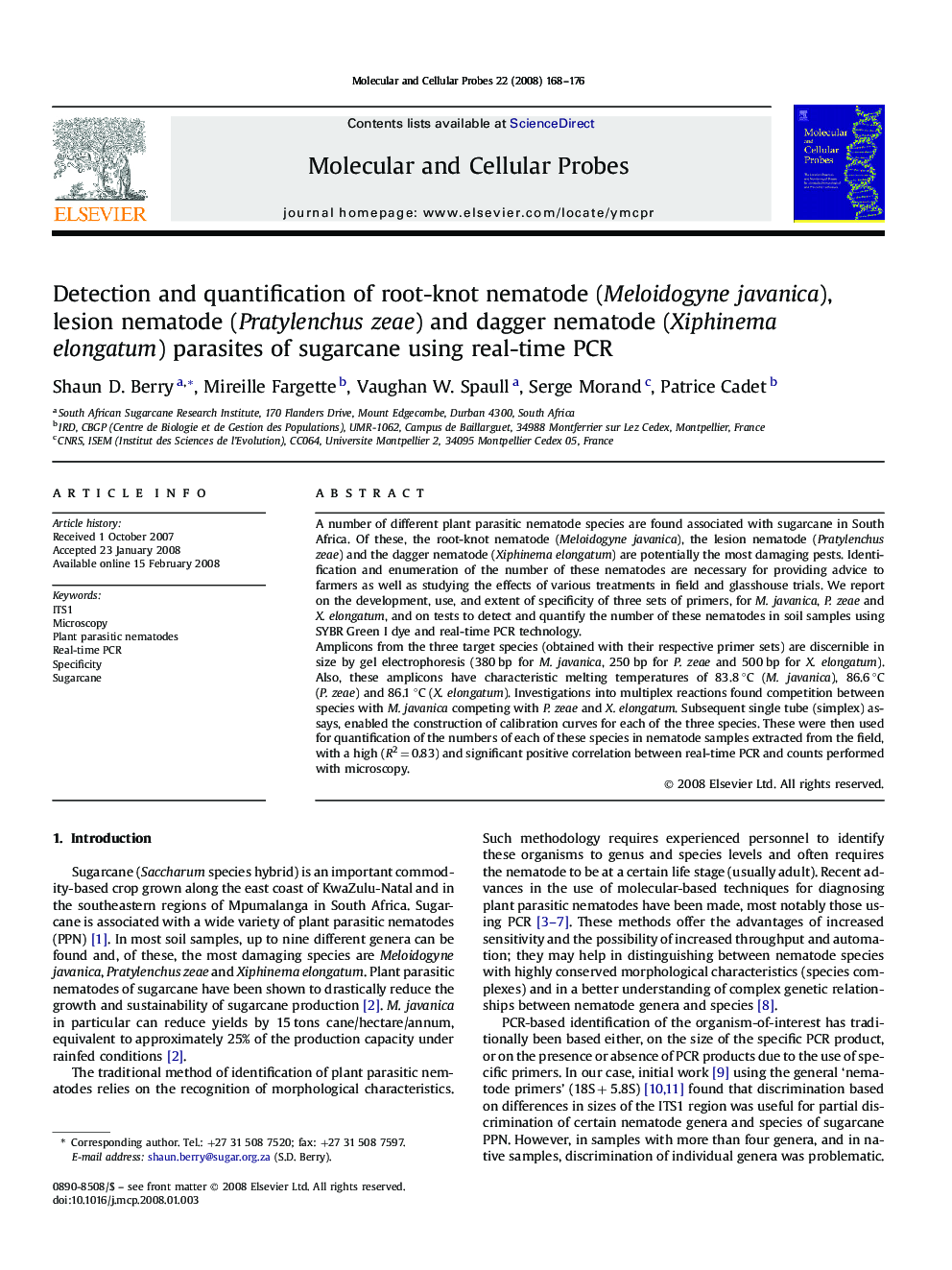| Article ID | Journal | Published Year | Pages | File Type |
|---|---|---|---|---|
| 2199994 | Molecular and Cellular Probes | 2008 | 9 Pages |
A number of different plant parasitic nematode species are found associated with sugarcane in South Africa. Of these, the root-knot nematode (Meloidogyne javanica), the lesion nematode (Pratylenchus zeae) and the dagger nematode (Xiphinema elongatum) are potentially the most damaging pests. Identification and enumeration of the number of these nematodes are necessary for providing advice to farmers as well as studying the effects of various treatments in field and glasshouse trials. We report on the development, use, and extent of specificity of three sets of primers, for M. javanica, P. zeae and X. elongatum, and on tests to detect and quantify the number of these nematodes in soil samples using SYBR Green I dye and real-time PCR technology.Amplicons from the three target species (obtained with their respective primer sets) are discernible in size by gel electrophoresis (380 bp for M. javanica, 250 bp for P. zeae and 500 bp for X. elongatum). Also, these amplicons have characteristic melting temperatures of 83.8 °C (M. javanica), 86.6 °C (P. zeae) and 86.1 °C (X. elongatum). Investigations into multiplex reactions found competition between species with M. javanica competing with P. zeae and X. elongatum. Subsequent single tube (simplex) assays, enabled the construction of calibration curves for each of the three species. These were then used for quantification of the numbers of each of these species in nematode samples extracted from the field, with a high (R2 = 0.83) and significant positive correlation between real-time PCR and counts performed with microscopy.
